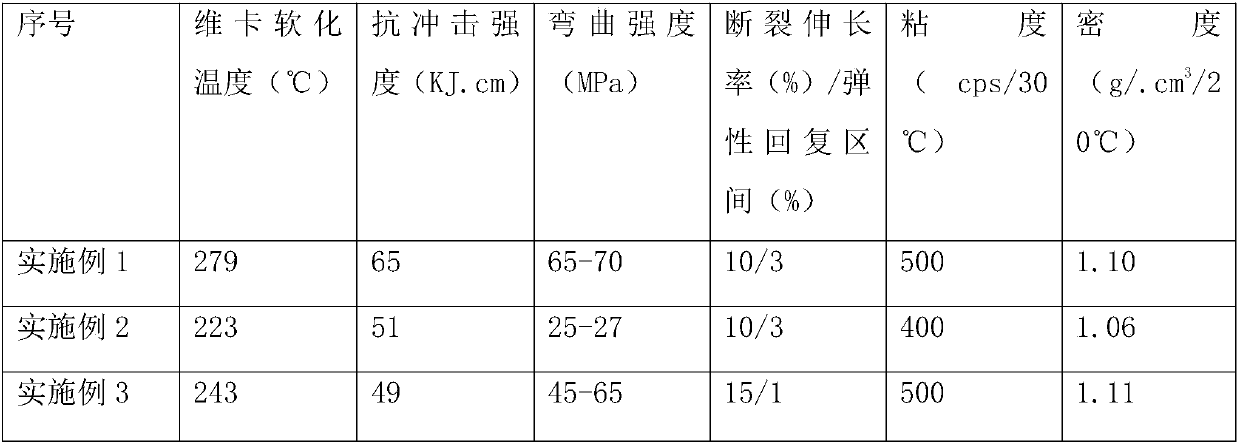Polyacrylate resin 3D printing material and preparation method thereof
A polyacrylate, 3D printing technology, applied in the field of printing materials, can solve the problems of poor stain resistance and water resistance, insufficient cohesion, weak adhesion, etc., to achieve stain resistance and water resistance, improve electrical conductivity, and strong adhesion Effect
- Summary
- Abstract
- Description
- Claims
- Application Information
AI Technical Summary
Problems solved by technology
Method used
Image
Examples
Embodiment 1
[0027] The invention provides a polyacrylate resin 3D printing material and a preparation method thereof. The components of the coating are calculated according to the weight percentage content: 15-20% of photosensitive resin polymer monomer, and 10-20% of photosensitive resin prepolymer , Photoinitiator 0.5 to 5%, terminator 1 to 2.5%, functionalized nanoparticles 5 to 10%, color additives 5 to 10%, high scores from polymers 10 to 25%, polymer additives 3.5 to 5%, Metal powder 5-10%, carbon fiber 0.5-2%, binder 0.5-1%, inorganic filler 1.5-3%, compatibilizer 2-5%, polyacrylate resin 20-30%, ABS plastic masterbatch 11 ~20% and PLA10~15%.
[0028] Specific steps are as follows:
[0029] Step 1: Take the ethylenically unsaturated phosphate monomer, acrylic acid and its lipid monomer chain transfer agent and initiator, place them in a mechanical mixer and stir evenly until a monomer mixture is formed;
[0030] Step 2: Melt and mix the ABS plastic masterbatch and PLA at high temperatur...
Embodiment 2
[0036] The invention provides a polyacrylate resin 3D printing material and a preparation method thereof. The components of the coating are calculated according to the weight percentage content: 15-20% of photosensitive resin polymer monomer, and 10-20% of photosensitive resin prepolymer , Photoinitiator 0.5 to 5%, terminator 1 to 2.5%, functionalized nanoparticles 5 to 10%, color additives 10 to 15%, high scores from polymers 10 to 25%, polymer additives 3.5 to 5%, Carbon fiber 0.5-2%, adhesive 0.5-1%, inorganic filler 1.5-3%, compatibilizer 2-5%, ABS plastic masterbatch 21-20% and PLA 20-15%.
[0037] Specific steps are as follows:
[0038] Step 1: Melt and mix ABS plastic masterbatch and PLA evenly at high temperature. After the mixture is cooled to 40-55°C, put it into extrusion, then pulverize to obtain powder;
[0039] Step 2: Dissolve the photosensitive resin polymer monomer, photoinitiator and terminator in a solvent, and perform a prepolymerization reaction at a certain tem...
Embodiment 3
[0044] The invention provides a polyacrylate resin type 3D printing material and a preparation method thereof. The components of the coating are calculated according to the weight percentage content: 25-20% of photosensitive resin polymer monomer and 20-25% of photosensitive resin prepolymer , Photoinitiator 0.5 to 5%, terminator 1 to 2.5%, color additives 5 to 10%, high scores from polymer 10 to 25%, polymer additives 3.5 to 5%, metal powder 5 to 10%, carbon fiber 0.5 ~2%, 0.5~1% of adhesive, 1.5~3% of inorganic filler, 2~5% of compatibilizer, 25~30% of polyacrylate resin.
[0045] Specific steps are as follows:
[0046] Step 1: Take the ethylenically unsaturated phosphate monomer, acrylic acid and its lipid monomer chain transfer agent and initiator, place them in a mechanical mixer and stir evenly until a monomer mixture is formed;
[0047] Step 2: Dissolve the photosensitive resin polymer monomer, photoinitiator and terminator in a solvent, and perform a prepolymerization reacti...
PUM
| Property | Measurement | Unit |
|---|---|---|
| diameter | aaaaa | aaaaa |
| length | aaaaa | aaaaa |
| particle diameter | aaaaa | aaaaa |
Abstract
Description
Claims
Application Information
 Login to View More
Login to View More - R&D
- Intellectual Property
- Life Sciences
- Materials
- Tech Scout
- Unparalleled Data Quality
- Higher Quality Content
- 60% Fewer Hallucinations
Browse by: Latest US Patents, China's latest patents, Technical Efficacy Thesaurus, Application Domain, Technology Topic, Popular Technical Reports.
© 2025 PatSnap. All rights reserved.Legal|Privacy policy|Modern Slavery Act Transparency Statement|Sitemap|About US| Contact US: help@patsnap.com

